Monticello – Thomas Jefferson’s Home on the Hill
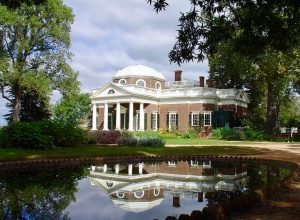
At the age of 26, Thomas Jefferson inherited approximately 5,000 acres and began plans for his home having independently studied the principles of architecture; he based the design on a neoclassical style developed by Andrea Palladio who was a popular Italian Renaissance architect in eighteenth century Europe. The home was to be built on the top of an 850-foot mountain located on the property and Jefferson named it Monticello an Italian word meaning “little mountain”.
As work began on the building in 1770, Jefferson lived in one of the outbuildings on the property known as the South Pavilion. A few years later, in 1772,he married Martha Wayles Skelton and construction still had not been completed on the house. Sadly, Martha died in 1782 and Jefferson left Monticello to go to France, undertaking a political position as Minister of the United States. The construction on this first version of Monticello was considered finished in 1784 while Jefferson was still in France.
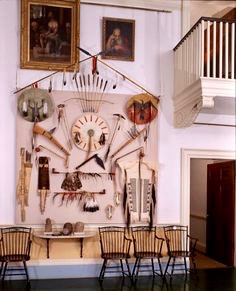
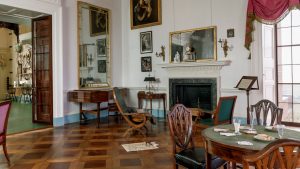

Europe changed how Jefferson looked at his project and he wanted include French design elements.
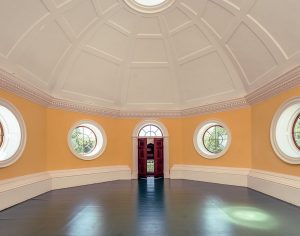
By 1794, Jefferson had returned to America to serve as the first Secretary of State for the newly formed United States followed by a stint as President.
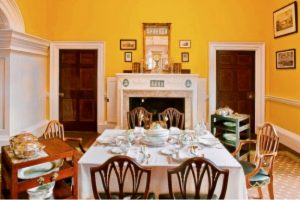
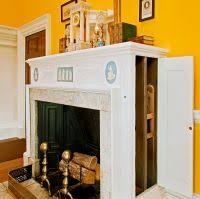
Although the building was considered completed in 1809 Jefferson continued to make improvements and changes on structure throughout his lifetime.


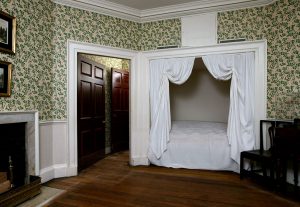
Thomas Jefferson died in 1826 and per his request he is buried in the Monticello cemetery.
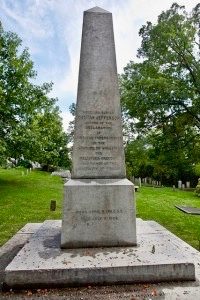
Author of the Declaration of American Independence of the Statute of Virginia for religious freedom & Father of the University of Virginia
At the time of his death, the estate was more than $107,000 in debt (which was a considerable amount of money at that time). Jefferson’s daughter, Martha Jefferson Randolph, found it necessary to sell the Monticello plantation including the house and surrounding property, she also sold the furnishings of house, livestock and farm equipment and the plantation’s slaves to pay off the debts.
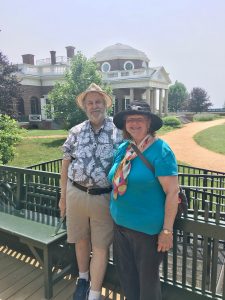
Over the years, Monticello had many owners until Uriah Levy bought the property in 1834. The Levy family continued to own the property for almost 90 years. Levy, a former commodore in the U.S. Navy, had long admired Jefferson and he chose to restore and preserve the home and property. In 1923, the Levy family sold the property to the Thomas Jefferson Foundation, a private non-profit organization. The Foundation now owns and operates the house as a museum, maintains the grounds of the property and administrates an educational center. Monticello is a National Historic Landmark and in 1987 it was designated a UNESCO World Heritage Site along with the nearby University of Virginia where Jefferson had also designed many of the buildings on the campus.
Montpelier – James Madison’s delightful home
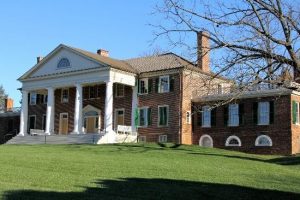
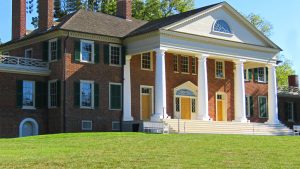
Located a mere 30 miles from Monticello, and doing basically the same thing throughout his live, our fourth President James Madison lived in his family home called Montpelier. We visited Montpelier the following day, after visiting Monticello, on our way back home to Springfield.
In 1723, Ambrose Madison, James father, received a large parcel of land located in Virginia. By 1732 he had built Mount Pleasant, the original family homewhich became the home for his wife, Frances Taylor, and their three children. Upon his death, it was believed ,but never proved, that one of his slaves had poisoned him.His oldest son; James Madison Sr. inherited the tobacco plantation.
After inheriting the plantation, Madison Sr. acquired even more land and the estate grew to over 5,000 acres making him the largest landowner in the area. Mount Pleasant soon became a prosperous plantation and Madison Sr. established several more businesses, including a distillery and ironworks. With a growing family a new house was in order and in 1764 the new home – a two-story brick Georgian style house to be called Montpelier was completed.
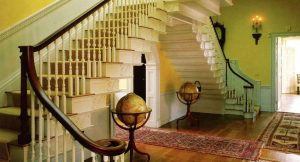
The future president, James Madison Jr. was the oldest of their children and while the young boy enjoyed life on the plantation, as he grew older he realized that he wanted to pursue a career in public office. He eventually went to school at the College of New Jersey and then on to Williamsburg and Philadelphia. While serving in the new nation’s capital of Washington as a congressman, Madison meet and married a young widow, Dolley Payne Todd, in 1794. By 1797, construction had begun on the front portico and a 30-foot extension on the main building at Montpelier.
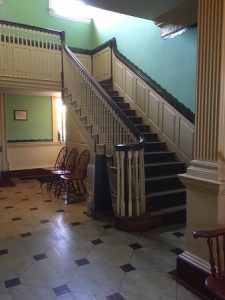
A number of additions were made to the house over the years to accommodate the family and to provide entertaining spaces due to James Madison’s rise in public office from Secretary of State to President of the United States. Finally in 1817, after serving two terms as president, James Madison and his wife Dolley once again left Washington and retired to Montpelier.
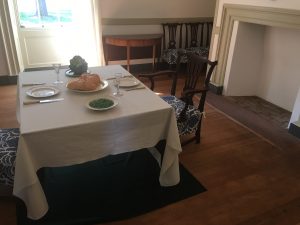
After leaving public office, James and Dolley Madison lead a very full life and together they spent many years editing his presidential and personal papers. They also enjoyed entertaining political statesmen and diplomats as well as their personal friends and neighbors. When James Madison died in 1836, the estate went to his stepson Todd Payne.
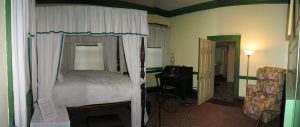

From 1844 until 1900, Montpelier went through a series of six different owners. In 1901, William DuPont Sr. bought the property. The wealthy DuPont family was very influential in the development of Thoroughbred horse racing in the United States and for this reason several barns, stables and other equestrian buildings were built on the property. After the death of William and his wife Annie, their daughter inherited the estate in 1928. Despite the renovations made on the Madison’s former home, Marion meant to preserve the original footprint of the estate, gardens and additional grounds. At the time of her death in 1983, Marion DuPont Scott bequeathed the property to the National Trust for Historic Preservation.
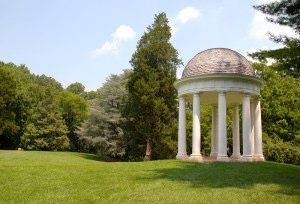
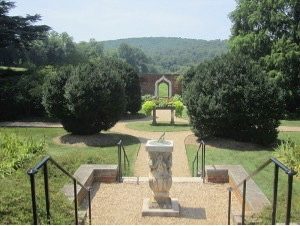
Since 1984, the National Trust for Historic Preservation took ownership of the estate and the organization has worked to restore Montpelier to how it would have looked during the time of James and Dolley Madison. From 2003 to 2008, the Montpelier, former home of James and Dolley Madison, underwent a $25 million restoration project funded by the National trust to remove the renovations created by prior owners and the DuPont family to restore the building to its original 1820 look. The restoration was able to recreate much of the color scheme from the Madison period along with some of the wallpaper.
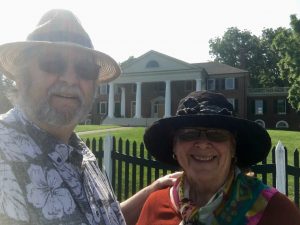
Our visit toured the interior of the property and much of the grounds. While there really are few furnishings left from when Madison owned the property, the house is furnished with period pieces and much of the history is brought to life by the docents leading the tour.
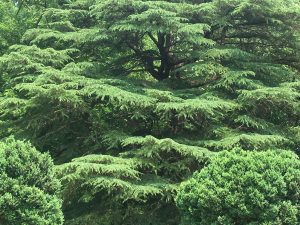
The estate includes a Landmark forest which Madison preserved for house use in fireplaces. 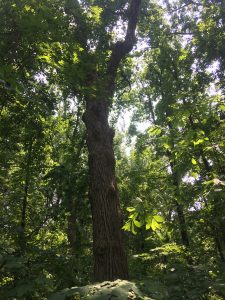
Some of the Tulip trees are hundreds of years old. He also was an advocate of preserving natural resources. A Witness Tree stands near the slave quarters and back of the main house.
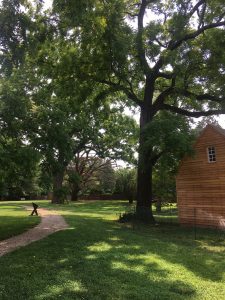
Perfect post for Independence Day! Seeing the homes and reading some of the history makes those important times much more real.